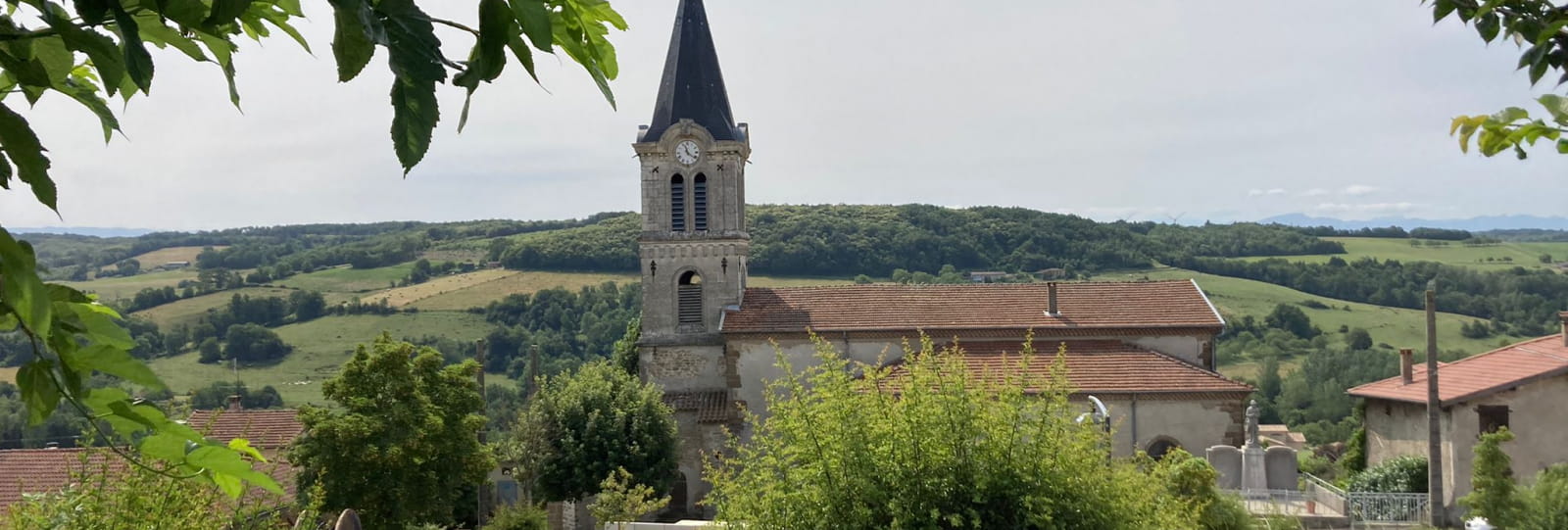
Valherbasse
Valherbasse is the result of a merger of 3 communes in 2019: Saint-Bonnet-de-Valclérieux, Montrigaud and Miribel. 880 inhabitants.
Montrigaud :
This village situated between the Herbasse Valley and Chambarans enjoys a jealously guarded quality of life. Here you find a local pond for tench, perch, roach and pike fishing, a forest for mushroom pickers and many waymarked paths for those who enjoy walking. Cereal farming constitutes the main activity in this district, together with livestock rearing.
According to local tradition you do not pronounce the "t" in Montrigaud. So you say "Mon-rigaud".
There are references to a "Montem Rigaudum" in the cartularies of 1333. Montrigaud once encompassed Saint-Bonnet-de-Valclérieux, the land of Charaix and part of Saint-Julien du Grand-Serre. In 1790, the village became the county town for a canton belonging to the Romans district.
In 1613, a man named Mazuyer, a doctor in Beaurepaire, announced that he had discovered an enormous tomb near the château of Langon containing the remains of a giant 25 feet tall with a 10-foot shoulder span and a 10-foot head circumference. Mazuyer transported the bones of the "giant" to Paris to display them to the public, for a charge, and won several surgeons over to his cause. There followed an interminable dispute among experts, between those who believed in a race of giants and those who saw only a few animal bones. Many publications appeared on this subject, which was then much in vogue. Ultimately it proved that the "giant's bones" were really those of an elephant or mastodon dating back several hundred thousand years!
Miribel :
The village of Miribel takes its name from the low Latin "Miribellum", meaning "beautiful view".
The first mention of this remote fiefdom of Clérieu dates back to 1080, the year in which Lord Gontard gave the church, some land and a third of Miribel's tithes to the Romans Chapter.
In 1323, Miribel was handed over to the Poitiers in compensation by the Clérieus. Diane of Poitiers sold the Miribel land to Hierosme of Monteux, a royal doctor who attended Catherine of Medici during her many pregnancies. In 1581, Clauda, the granddaughter of Hierosme of Monteux, married the Catholic Captain Guigues-Antoine de Rostaing to whom she gave Miribel. Once the family had died out, Miribel returned to the Beaumonts until the Revolution.
Due to the presence of the "Tower" and a few remains of 15th and 16th century housing, we can place the original core of Miribel as the "Carrière" ["Quarry"], a district referred to as early as the 11th century and that had no doubt been in existence for a long time. The "Tower", the only remains of the old stately château of Miribel, is believed to date from the 13th century. The old Notre-Dame-de-Pitié Chapel, mentioned in a 14th century will, retains two small equilateral windows and paintings with the Beaumont coat of arms.
Sights to see : Saint-Sever Church.
Saint-Bonnet-de-Valclérieux :
Situated between the Thivolet Forest and the Chambaran Plateau, the district of Saint-Bonnet-de-Valclérieux offers a wide range of sporting activities: hiking, mountain biking etc.
The earliest reference to Saint-Bonnet dates from 1166. The parish was then divided into the districts of Montmiral and Montrigaud. For a long time, the village bore the name of Saint-Bonnet-de-Montrigaud. In 1661, it was separated from Montrigaud and became Saint-Bonnet-de-Valclérieux ("clear valley" or "valley of the key to the streams") at the request of Lady Eléonore Pothon, the last descendant of Count Humbert de Chaponnay, who resided at the Château de Solage. Even today, 40 hectares of public woodland are in the Montmiral district. Saint-Bonnet runs them as a private estate.
Remains of a Gallo-Roman villa were discovered in a place named Replat.
"The old parish registers of Saint-Bonnet refer to "fêtes du reinage" feast days, traditional religious processions and banquets held in honour of "Mgr St-Clair" in the mid-17th century. For one day, anyone could hold the title of king, constable, crown prince or captain of the guards…
While walking you may discover fragments of glass, medieval remains that are evidence of a time when the kilns burnt for the glassblowers of Saint-Antoine-l'Abbaye.
Opening
Through Valence Romans Tourisme





